The concept of virtual reality has, with the advancement in technology, moved from the realm of pure science fiction and into the real world. Most commonly, virtual reality (VR) has been experienced in the forms of video games and world simulations. By using special glasses or goggles, you can experience being inside of a digital experience instead of simply viewing it. Part of the exciting aspects surrounding VR is the ability for the simulation of the senses beyond just sight. Hearing and touch are standard fares but VR pushes the boundaries and can simulate even odors.
Auditory stimulation is one of the cornerstones of VR and a necessity to creating more authentic virtual worlds. Some simulations require more than just hearing or seeing these digital environments. Kinetic and tactile inputs can help further establish a fully-developed world that seems real but is actually being generated by computers. Computers become tools that can take you into experiencing an entirely new world through VR. It should be noted that one of the foundational principles of VR is that virtual reality is the simulation of an environment that is enhanced by triggering sensory responses. This makes it different from augmented reality. Both are close in that they create digital environments but there is a major difference.
While virtual reality is about bringing the user into a simulated world, augmented reality creates imaginary digital objects via a camera lens and computer scripts and algorithms. Using this code, the programs create and place 3D images in a real space. The effect is sort of like an image overlay of an artificial 3D object superimposed on the real environment. Augmented reality allows for the user to still be grounded in the real world while interacting with digital counterparts. Virtual reality, however, is completely immersive though it still relies on computer languages, math and sensors.
Instead of pinpointing the surroundings by using a standalone camera, the user’s eyes operate as the primary source of vision. When the eyes move, the objects remain stationary just as in the real world when you look around. The graphics are interlaced in such a way that it creates a believable world that the user is free to explore and interact in. There are many ways to experience virtual reality. Usually, the common factors that could be obstacles to high user count are the cost of computational power (having strong enough machines to simulate the graphics continuously), equipment expense and content accessibility. The equipment used for VR tries to capitalize on combining digital graphics with the human need to process information visually.
The user interfaces, to be successful, must not be bulky and distracting from the experience. Various companies, like Samsung, Epson and Google are developing new ways to deliver their equipment to the public. Immersion technology is an emerging field and as such, its full capabilities are still largely in the theoretical phase of being unknown. Learning about the ins-and-outs of VR can be done following numerous paths.
There are several resources, in different formats, that can be used as a guide to learn virtual reality.
Where to Learn VR
Podcasts
Uncle Jonny’s Virtual Reality Podcast

Uncle Jonny’s Virtual Reality podcast focuses on what’s developing in the world of VR. The podcast is released episodically and is typically under an hour long. This podcast is run by Jonathan Linowes who hosts with his son, Jarrett, to discuss not just using VR but also topics like VR software development, VR product reviews, conferences attended by the hosts and the release of both games and equipment for VR. There are occasional episodes that stray from the topic of VR. Linowes also shares interviews he’s invited to that discuss virtual reality applications for the average user or even those unfamiliar with the concept. One of the more interesting aspects of this podcast is that besides the educational components, there is also an opportunity to hear the opinions of casual VR experience users. These opinions come from his family, whom he shares his VR equipment like the HTC Vive and Oculus Touch. There is also insight relating to the VR games that are available for the multiple platforms. Linowes shares the work happening outside of his podcast as well. He has developed a VR game, known as Power Solitaire to help expand the reach of VR in gaming. Additionally, he has released a book encapsulating his experience with VR but taking the stance of those who wish to know how it works rather than just using it for entertainment. The book is called “Augmented Reality for Developers.”
VRScout

Boasting a well-made site and the option to subscribe to a newsletter, VRScout is a modern and up-to-date way to stay abreast of the happenings in all things VR. Founded in 2014 by a small group of friends, VRScout has climbed the ranks of popularity and is well-known for its quality content. Though based in a studio in Los Angeles, California, the developers have reached millions of audience members. While firmly focused on VR, part of their work revolves around highlighting the accomplishments of those pursuing the advancement of VR. VRScout also features current events throughout the world of VR. This includes special events like an augmented reality-based exhibition happening in the NYC MOMA and even being a part of the coveted fashion week. They also share information on the development of VR in the film industry. This is a great option for those looking to learn not only about VR but also the myriad of applications for the technology. VRScout demonstrates that VR can be used for topics ranging from business (Uber patenting their own VR autonomous car system), augmented-reality games based on location, and more empathetic causes like experiencing an unwanted pregnancy. They also release their content consistently and can have two different articles published on the same day.
Rev VR Studios
Going by the name Rev. Kyle, the host of the Rev VR Podcast has a proven track-record of being knowledgeable, credible and innovative. The overarching theme of the podcast is, of course, virtual reality but he also incorporates mixed and augmented realities as well as other aspects of the digital user experience. Working in the field of Immersive Technology, Rev. Kyle uses his podcast as a platform to share the information he has learned as well as a means to explore new paths to take. Some of his podcasts reflect his speaking engagements throughout the VR/AR community, including meetups and convention panels. Another area of interest surrounding Rev. Kyle is his hands-on involvement with developing VR technology. One of the projects he is credited for contributing is the Microsoft Hololens, a set of special VR glasses that allow for a mixed reality experience. It is a descendent of Microsoft’s Kinect, which was a part of the XBOX gaming system. Rev. Kyle explores the applications of VR technology like the Hololens on a commercial and non-business scale. He is often joined by other well-respected members of the VR community which bolsters this podcasts informational value. The podcast began in 2016 following a successful crowdfunding venture and as such, Rev. Kyle has been able to document and broadcast the development of the VR world as well as interact with those influencing the changes.
Voices of VR

Officially launched in May 2014, Voices of VR collects and spreads information on the development of and the rise in popularity surrounding virtual and augmented reality. The host of Voices of VR is Kent Bye, who has dedicated over 600 episodes to educating on and exploring the world of VR. While others might seek to share the background development of VR, Bye addresses the contemporary uses for virtual reality. His podcast features multiple guests and views VR from a number of perspectives. The interviews are not restricted to only the technical scripter writers found within the VR community. Bye interviews those on both sides of the experience. Having different professionals on the podcast allows Bye to make the content seem less novel and more lasting. Bye’s podcast is also a fantastic resource as it introduces creative producers, world designers, and audio evangelists. The world of VR is complicated and multi-faceted and requires many people to fulfill their roles in order for the VR system to function as a whole. Because there are also so many available podcast recordings, stretching back to 2014, Bye has created a lengthy catalog for both those casually interested in VR but also those who have experienced and helped create the world of VR.
PodVR

This podcast is hosted by two members of the VR community. The hosts of PodVR are Matt Carrell and Brian Bullard. The concept developed within a third-party site called Reddit where they were able to continue to build their credibility and following. Their archive dates back to 2014 and one of the common threads running from their oldest podcasts to the more recent is the development of virtual reality gear and accessibility for the average consumer. This is still an emerging field as more gear is still on the expensive side and out of reach to casual VR enthusiasts. Carrell and Bullard share their own VR experiences with this developing technology. Like most podcasts, there is a heavy user interaction as the hosts seek to connect with their audience. There is also a slight difference in how they approach their podcast. While other sites are focused on being like news resources or in-depth in the technical aspect of the actual creation of VR, PodVR takes a more laid-back approach. This allows anyone to be able to listen and understand what the hosts are referring to in their recordings. So while this may not be the best choice for super advanced VR users already heavily involved in immersive technology, it’s a great entry-level podcast for those looking to begin their journey into the world of VR.
Road to VR
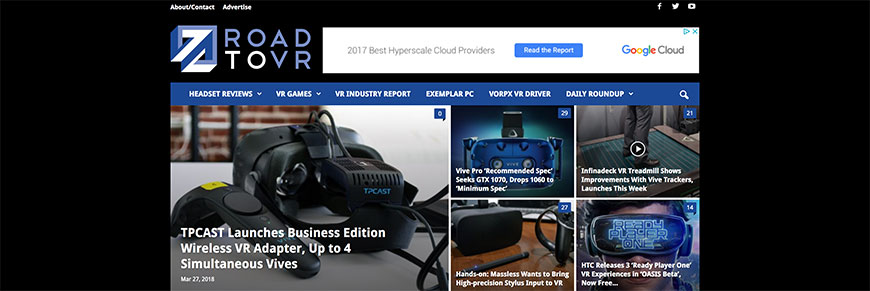
One of the longer running VR podcasts, Road to VR was established in 2011 and is still going strong. It’s marketed as an independent publication focusing on the development and expansion of specifically the consumer market for virtual reality retail. The goal behind Road to VR is to be a bridge between the technical side of virtual reality and how consumers will be able to use the technology. Road to VR was founded by Paul James and Ben Lang. Though they are in different countries, their goal is united. Ben Lang’s specialty is organizing and structuring the evolving data as virtual reality develops. Paul James, on the other hand, concentrates more on the graphics surrounding the VR applications as well as experiencing a fully-fledged integrated immersive game experience. Together they use Road to VR to chart the progress of the field. They offer reviews on the available VR headsets including the PlayStation and Oculus options. They also offer a custom build tower PC that is capable of handling the most intense of consumer VR gaming called the AVA Exemplar 2. In keeping with their mantra, they also link a VR industry report that forecasts the projected highs and lows of VR. They also offer a subscription option so that you can get all the latest updates directly to your email inbox.
Enter VR
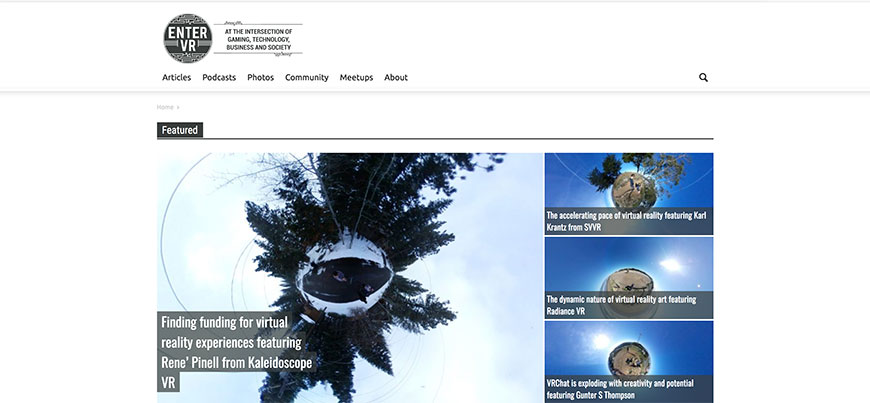
Enter VR’s name is a sort of play on words. On the one hand, it is the name of a collective that is active in the VR community. On the other, it is a call to move to the future which they believe virtual reality gaming and media consumption is. The website offers articles as well as podcasts, which date back to 2013. But the podcasts have guest speakers who can explain more of the VR concepts with more clarity. Though they prioritize gaming as one of the more important aspects of the VR movement, Enter VR’s podcasts also address VR use outside of gaming. Some podcasts relate to VR use in the medical field for scanning while others touch on the combination of VR and spiritualism. There is also the possibility of attending meetups that allow for the podcast audience to join together and discuss the topics presented and also the future of VR. This is a great way to get further information from the podcast topic as well as meeting like-minded people, though the area is limited to those on the west coast. The podcasts themselves are very organized and new content is posted regularly. There are also typed notes that accompany each podcast that serves as a preview of what was discussed.
Local / In Person
Startup and Entrepreneur Groups
For many of us, learning on our own can be difficult. Whether it’s a lack of focus, wanting to ask questions or simply the need for company, some find it better to study with others. For that, you can look into and join a startup or entrepreneur group. A startup group would be aimed at sharing knowledge to make the topic of VR an even playing field for all its members. These would be more business-oriented groups that focus more on the professional use of VR and how the field can expand in terms of profit. You can learn the basics of VR from a consumer standpoint (like where to get your VR equipment, which companies to watch as they develop, which companies to invest in or to avoid and so on). Entrepreneur groups will likely be made up of people who are lesser known in the VR community but who are still passionate about its business uses. These groups are a great way to learn about current trends in VR development. You can also use these groups as a way to network and find potential business partner who you can join and develop your own financial exploration of the VR field.
Meetup.com

Meetup is an organization that is used across many cities to help people find others who share similar interests. There is a wide range of available groups and these include VR. You can either search for an existing meetup group in your city that focuses on meeting for talks about VR or, if you prefer, you can create your own. One of the perks of using Meetup.com is that each meeting is scheduled within the group discussions. As such, you can have an idea of who you’re going to meet and also what you’ll be talking about. This way, you can prepare to explore ideas relating to consumer VR products or even something simpler like advancing graphics in gaming. The meetings can be a bit like a study group where you join fellow students in gaining more knowledge. Because of the well-organized website (and mobile app option), you can share links and information before the meetups. Perhaps you found an interesting podcast you want to share or have an article to discuss. Meetup.com can connect you to people who are knowledgeable about the different aspects of VR and are willing to share what they know. Meetup.com will also narrow your meetup locations by your city and neighborhood.
University Research Communities
While entrepreneur groups will have a focus on the financial application and benefits (or cost obstacles) surrounding VR, university research communities will be dedicated to expanding the information revolving around immersive technology. This will be a more behind-the-scenes perspective and go into the detailing of how the products work and also how they continue to improve. Research communities will have data about VR that spans from the first ideations to the most modern uses. Possible members of these communities are the data and computer scientists as well as the code writers who make VR a tangible reality. These communities allow for the sharing of knowledge with a specific goal in mind (i.e., creating fully immersive gaming, using VR for personal or medical outreach, shopping with VR or even the trial and error needed for the developing of VR equipment). Finding these groups can be done by either contacting a local university or college that offers courses in computer science, information technology or even video game studies. Being that these communities are university-based, you will likely interact with both students and professors in the VR field. Universities also allow access to their expansive real-world and digital libraries, which will enable you to push your own research further.
Inspiration
TEDTalks
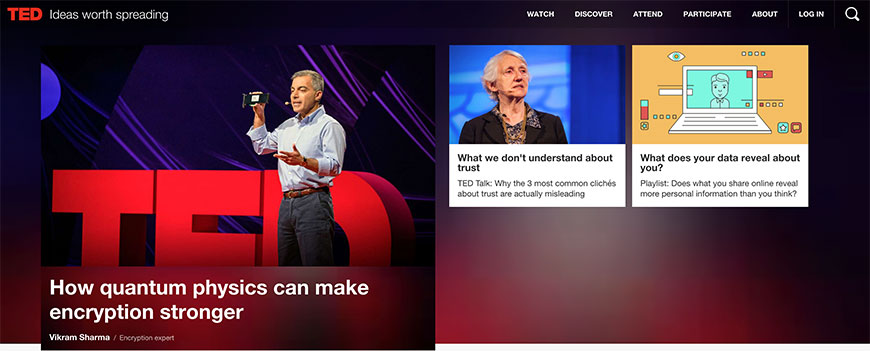
If you’re unfamiliar with the concept, the TEDTalks is a series of video lectures that cover broad topics from personal relationships to business development and branding. The Talks are led by various professionals, skilled and knowledgeable in their own ways. For the purpose of learning VR, they are a great resource. There is a lot of information available via podcasts, articles and reference entries surrounding the VR field and they continue to grow in number as developments happen. A TEDTalk on virtual reality can help make the information more palatable and easier to understand. Another great benefit of using TEDTalks to stimulate your VR inspirations is that the people leading the Talks are industry members currently working in the multiple ways VR can be implemented in the world. Some focus on using journalism as a means to enhance VR, while others speak on the media usage of VR in movies and television entertainment. Being able to hear about VR from those using it in their daily lives in multiple ways can definitely encourage and stimulate your own passion to seek more information about VR development. TEDTalks allow for VR information to be presented not from just the business side or for uses in the private sector. It combines both and introduces even more ways to use VR.
YouTube Library

With the rise of social media and the enhancement of mobile devices that allow for video streaming anywhere at any time, YouTube has become a collection of media that goes beyond joke sharing and casual entertainment videos. There are tons of educational videos that span topics from cooking to hair care and even virtual and augmented reality. The video content on YouTube can be encouraging in different ways. There are some videos that are aimed at educating and explaining how VR works, how it’s developing in terms of research, what codes and computer languages are used to create the programs, what level of power your computer needs to be in able to successfully run VR applications and other technical aspects. However, there are other videos that are less about educating their viewers and more about showing the potential of VR usage. These videos are still slightly educational but more for entertainment. They can involve the video uploader showing his experience as he plays a VR game and narrates what is happening in the simulated world. Unlike other video outlets, like TEDTalks, viewers can communicate directly with the content provider and message them at almost any time with questions or to request clarification. YouTube will also be a great source for VR product reviews that cover the unboxing and use of newly released equipment.
Blogs, Articles, and Forums
Road to VR
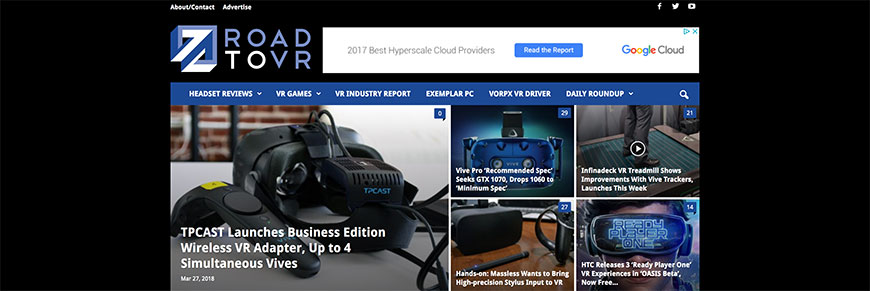
Not just for podcast content, Road to VR offers insightful articles regarding the field of VR and its developments. Because Road to VR is marketed as a news outlet for consumer use of VR, the articles focus less on the information technology behind making the VR concepts real and focus more on how the average consumer can buy the products and use them. There are several reviews of newly introduced products like VR tools that enhance the experience like a stylus or joystick. Additionally, Road to VR shares the development of what companies are offering to their VR consumers. They do not limit themselves to strictly product reviews, however. Included in the list of topics are also game reviews. These reviews highlight the highs and lows of a game and how successful it is at demonstrating its VR capabilities. There are articles about the designing of interfaces as well as how VR is spreading and being used in the film industry. There are also spotlights on augmented reality and its real-world applications, particularly in gaming. Besides that, the site broadcasts the timelines and progress of various VR-related crowdsourcing projects. During convention season, they also share articles about the events in live blogging sessions.
Quora
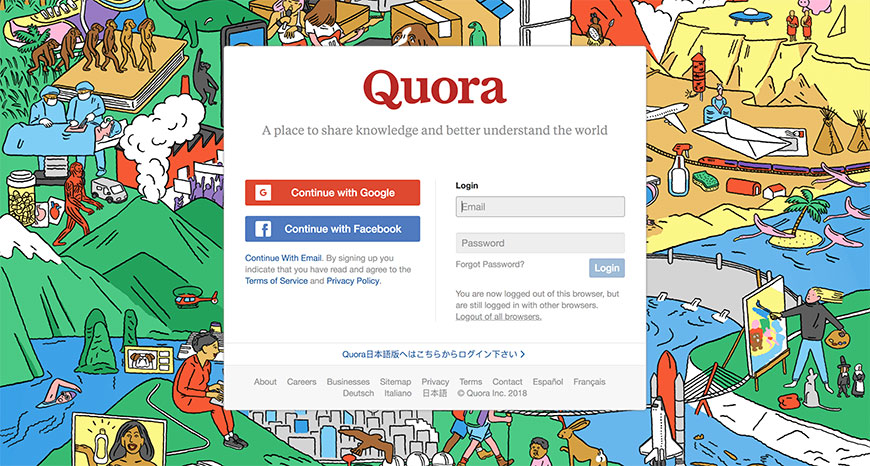
Publicly available since 2010, Quora is a website founded on the creation of a community culture with the intent of sharing knowledge. The format is such that a user asks a question and it is answered by multiple users. Additionally, these answers can be edited and categorized so that they can be readily accessible to others with the same line of questions. Because virtually anyone can answer, some of the responses might be too laid back for what you’re seeking. Even so, there are verified accounts that are held reputable people, including those who have given VR TEDTalks in the past. Quora is unique because of how open the questions can be. Users can seek answers to virtually anything they’re curious about regarding VR. Some questions are more humorous (like what virtual world would you want to explore) while others have more serious intentions, like building VR equipment prototypes or how to best choose a VR team of developers. The insights offered about using the same VR programs against multiple platforms, pushing the boundaries of VR and making certain products obsolete with the development of VR are explored with multiple users and experiences. Quora also offers the ability to upvote an answer, marking it as one of the better responses and pushing it to the top of the search results. Certain answers also get awarded for being great quality and informative.
Medium | Virtual Reality

The online publishing platform Medium was launched in 2012 and was developed by Evan Williams. It is now home to hundreds of articles that are written and uploaded by journalists of advanced levels. The available content revolving around VR focus on the user experience (some positive, some negative), VR design principles and using VR as an aid to storytelling, among other things. Though the articles are hosted on Medium, they often connect to other sites where more information can be obtained about that specific topic. The articles, being slightly open in their topic, also have educational components for those looking to develop in the VR world. One of the nicer aspects of using Medium is that some of the authors are also just beginning their research into the world of VR and as such, are documenting the experience for others. The articles are categorized by an estimated time of how long it takes a user to read the article. This way, you can devote a lot or a little bit of time to exploring VR topics. Some of the content providers have been following VR developments since the 1990s and can share how the field has improved but also what steps need to be taken for future development.

The discussion and social news site Reddit is used by many as a way to interact with other users under an overarching topic thread. The topics are broad and can be broken down into what are called subreddits, which are a more concentrated look into a specific subject. Regarding VR, there are threads that resemble classified ads, with users looking to either sell their existing VR equipment or buy new models. There is also access to videos that are linked to sites outside of Reddit, like YouTube. One of the key features of the site is the use of karma points, which indicate not only a user’s popularity but also the quality of their content. The site is very active and updates as frequently as its user base needs to either seek information or disperse it. For example, those with a Vive Headset were alerted to the end of a usable coupon code shortly after the company nixed its validation. In addition to all the subreddits posted by various users, there are two moderator-controlled topics: General Discussion on Virtual Reality and Let’s Plays and First-hand Gaming Experiences. The former is for a basic introduction into VR. It connects like-minded members of the community. The latter is for more specific user experiences while using VR equipment for use in VR gaming.
UploadVR

UploadVR is the result of repeated meetups and a desire to increase the rate of VR growth for the consumer VR industry. The startup happened in San Francisco and has since grown to incorporate events with well over 3000 attendees. Having this kind of reach makes the website a necessity for those looking to learn more about the world of VR. There are four wide categories for the articles: enterprise, reviews, gaming, and news. Enterprise delivers content focusing on the business side of VR. This includes VR development in healthcare, manufacturing goods, retail, and architecture. Essentially, it focuses on the way VR can be used for profit and in business. The other categories are much the same, providing articles with more insight into their targeted topic. The review category, in particular, has information on gaming highlights (and disappointments) and also VR equipment like the Oculus Touch. This allows readers to learn more about the products being offered or worked on in the field. The news section is a combination of the reviews and also has articles about how VR technology is causing real-world impact. UploadVR also has an offering of classes for those who wish to get a hands-on experience of exploring VR.
Software, Programming, and Training
Unity Tutorials

A massive library of tutorials, Unity Tutorial is an expansive knowledge base offering a wide array of topics. It is a global gaming software that has impacted many developers and players. Unity is used for creating VR games. The games are supported by many platforms, including Android, Windows, Apple, PS4 and more. They are partnered with such well-known names as Sony, Samsung, and Google. The tutorials offered covers the basics of VR game development for both computer designers and artists, both visual and sound. There are interactive tutorials that require viewer participation to continue the lessons. For the more adventurous, there is an available game kit where you can test your understanding of VR. The 2D game kit section is broken down first into general groups (general information, getting started, etc.) and then further dissected into parts for better understanding. This allows for the information to not be overwhelming and for learning to be more seamless and easy. One of the final categories is for more advanced users. They also offer a certification in Unity that can help you earn a spot in the employee section of VR. The Unity community is a collection of Unity users who share their success and failures in order to help one another develop. There are forums, issue monitoring, a form to submit feedback and a section for answering questions. If none of those are able to help you, the website developers have a separate support section that is aimed at helping users.
FXphd

There are over 200 courses available via FXphd and its subscription-based educational service. The courses are technical, craft-based and also founded in application use. To gain access, you have to join the website and choose between two membership tiers. The standard membership is slightly cheaper but does not offer the opportunity to download the course footage and class movie files. Both, however, offer streaming videos with course information. Membership can also be bought at year-long intervals. Membership also gains access to private member forums where you can bounce ideas off other members and also work out other issues. The course topics range from introducing programs like After Effects to visual editing with RenderMan. FXphd does not offer any of the programs for sale and it suggested that you own the programs involved in the courses that you’re taking. It should be noted that the education structure of FXphd is not like other course offering sites. They do not offer single standalone courses. Instead, they want their members to experience complete subject courses. However, there is no monthly limit to how many courses you can take while you’re a member. There are also discounts for group learners if it is a team needing to refresh or gain knowledge on the graphics properties behind VR application.
Unreal VR

The Unreal VR is an engine used to help create stunning graphics for augmented, mixed and virtual reality exploration. The engine outputs at the needed 90 (or higher) Hz stereo framerate that can create a fully immersive world that our brains can accept. It is regularly updated so that there is never a lag or slip in the quality. There is a community section that allows Unreal VR users to join others and share information. Included in the community section are user groups, events, a partition purely for getting questions answered and a blog. For those who are not entirely comfortable using Unreal VR, there are multiple resources offered. There is a link to a third-party Wikipedia article. There are also video tutorials and a separate subsection dedicated to education. One of the perks about Unreal Engine is that it’s free to download for educators, administrators, and even students. This means that it can be accessed by many who are seeking to develop their VR skills. It has a fairly open EULA that allows the engine to be used for personal and even commercial endeavors. Also part of the resources tab is a section called documentation that is an extremely organized layout of topics to explore in order to learn more about Unreal Engine.
Pluralsight

Formerly known as Digital-Tutors, Pluralsight is a learning platform that is based on technology that is affordable and extensive. Like other subscription-based education resources, there is a monthly or annual option. Included features in all subscription offers are: course discussions, learning paths, offline viewing, mobile and TV apps, certification, files with various exercises so that students can practice what they’re learning and the entire offered course library. There is also course and tech support available via phone or email to help handle issues that can’t be solved using the site. There is a unique qualifier where users can take a short test that helps them determine what areas they need to study. The aim of the site is to lessen any gaps in skill regarding technological areas like Google, Cloud Storage, data creation and collection and graphic design. The options are divided into two broad categories in order to best serve your needs: personal or business. The latter focuses on ensuring that an entire team has the same compatible level of skills in order to be more efficient and productive. The personal courses are similar but based on individual development. Both stress the need to have a measurable way to chart progress.
360° Content
WeVR
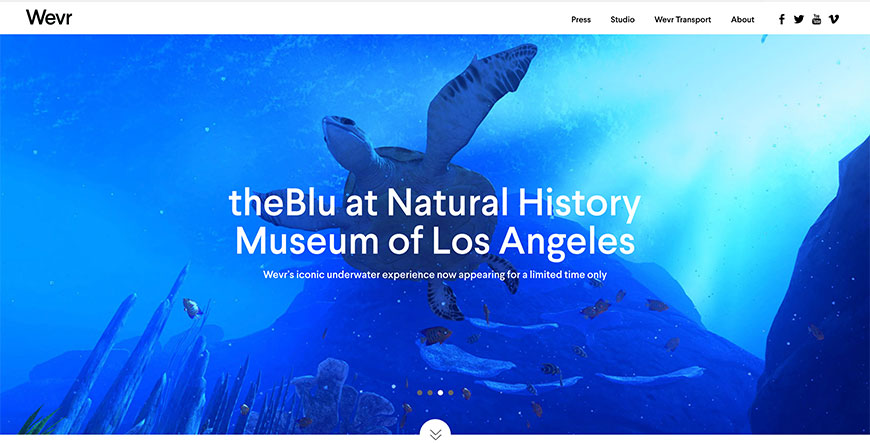
WeVR is a software company founded in 2009 that oversees a VR media players as well as a community of creative designers and engineers. Among the products they offer, there is a VR player that can be used for collaboration (allowing up-and-coming VR content creators to shine) and also software that allows for VR playback. Their network of VR idea-sharing and community building is known as WeVR Transport. It is branded as an immersive experience that offers various shipped VR titles for users to explore. There are two ways to explore the VR content using the downloadable software. One option is a paid, premium account that you can specify use for only mobile or combined PC and mobile access. Their works are supported by the Oculus gear and HTC Vive, with Google Daydream and Oculus Rift to join their ranks at a later time. This is a great option to get the full effect of being placed in a true VR setting. The other option is a free account that can be a good way for a beginner to explore VR content without feeling locked into a contract. The 360 videos they release are created using multiple cameras, from REDs to GoPros, all with the clear intention of creating the best VR environment possible.
YouTube 360 Videos
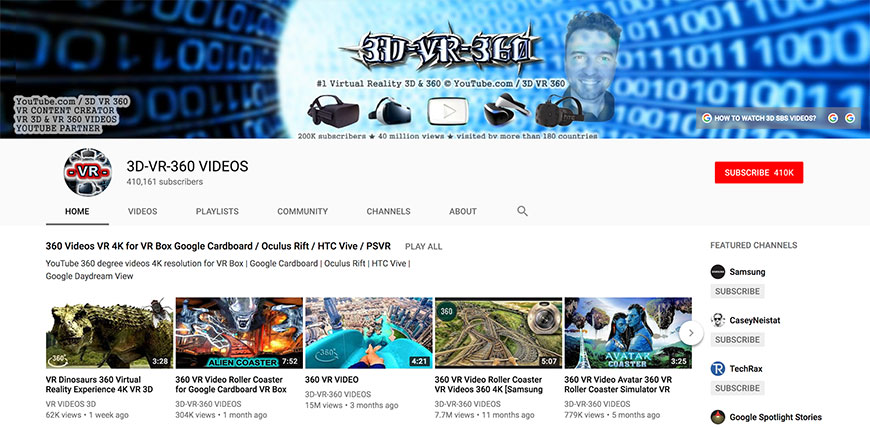
YouTube is a great way to get access to 360 VR content without paying any extra money for the experience. There are hundreds of videos that you can navigate through and get a glimpse of how 360 content works. The idea of each video is to create an immersive experience. This can be enhanced depending on which type of VR equipment you have available. The Oculus Rift, HTC Vive and Google Cardboard are among some of the supported VR gear that can be used while watching the videos. Alternatively, if you do not yet have your equipment, there are directional arrows overlaying the video that mimic the motions of moving your head or body. The content is varied and you can experience simulated, game environments. Some of the videos are recordings of actual places like the ocean or inside the cockpit of a fighter jet that can be experienced using VR headsets. The exciting aspect of 360 videos is that they change how the user experiences the content by introducing content behind the viewer. Typically, media is experienced by viewers looking straight ahead. These videos allow you to look behind you and still be a part of the virtual world.
Jaunt
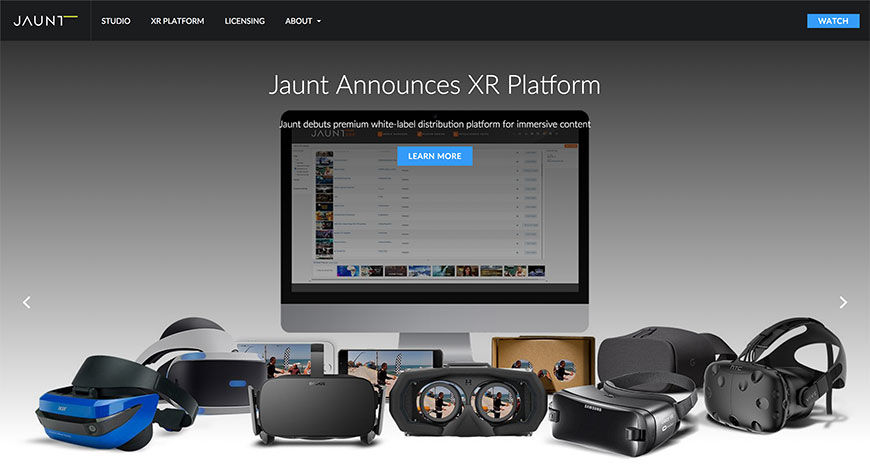
When it comes to producing and delivering virtual content, Jaunt is a powerhouse. Jaunt is a globally-acclaimed company that has worked with major media providers. The subsect Jaunt Studios is responsible for developing original VR experiences, co-producing content and brand recognition. Jaunt Studios creates content that is about the merging of VR and excellent storytelling. Rather than rely on the beautifully designed content, they aim for their words to be artful and creative. Under this brand, there have been over 200 VR experiences made than enhance the cinematic moment. This quality content has been awarded in such forums as Tribeca, Raindance and the Sundance Film Festivals. Their contributions to media have also received Emmy nominations. They use their own high-quality software for distribution known as the Jaunt XR Platform. The Jaunt XR Platform is a versatile and powerful package that can be used by many groups and organizations, from established brands to sports leagues. The goal is to bring the users into an unforgettable experience. The Jaunt XR Platform is cross-platform. This means that regardless of which virtual, augmented or mixed reality headset you’ve chosen, you can still use it. This platform is also not hindered by different internet browsers or mobile operating systems.
Littlstar
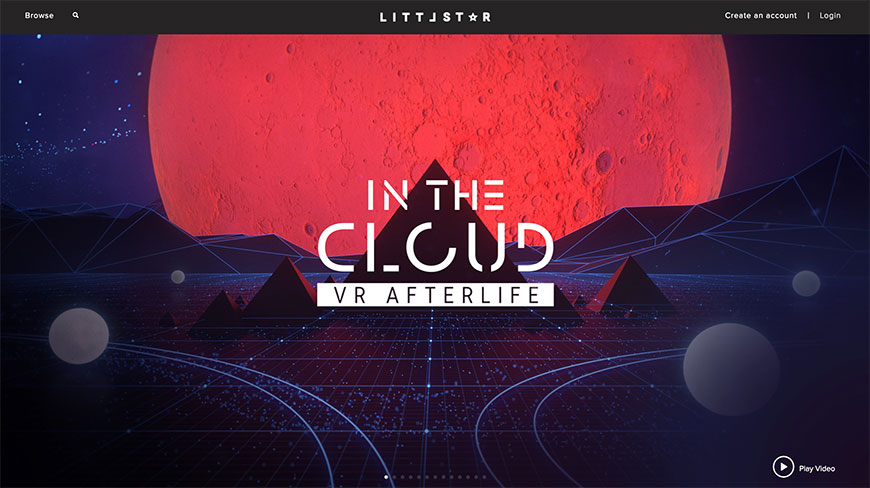
Littlstar is a VR network that allows you to experience VR content regardless of location and, to a point, equipment restrictions. It is a global platform that is available on multiple platforms that reach millions of users. So whether you use Android via Google, the Apple Store, PlayStation VR, Samsung or Vive, you can still experience solid and high-quality VR content. Their platform is used by several large companies and content providers like National Geographic, Disney, and Viacom. Their content is divided into subcategories similar to other video streaming services. These include news, lifestyle, travel, sports, music, gaming and education. This versatile platform can deliver content without being limited in its subject matter. You can use their platform to broaden your knowledge base as there are VR explorations of multiple locations like United States’ national parks Chernobyl and underwater scuba diving. Outside of educational content, there is content that is purely entertainment media. Broadway plays and children’s animation are both available using Littlstar. Movies are also available for a more intense viewing experience, as well as concerts which can help create a feeling of actually being in the venue. There is also content that combines animation with music for a unique experience.
Industry Blogs
Oculus
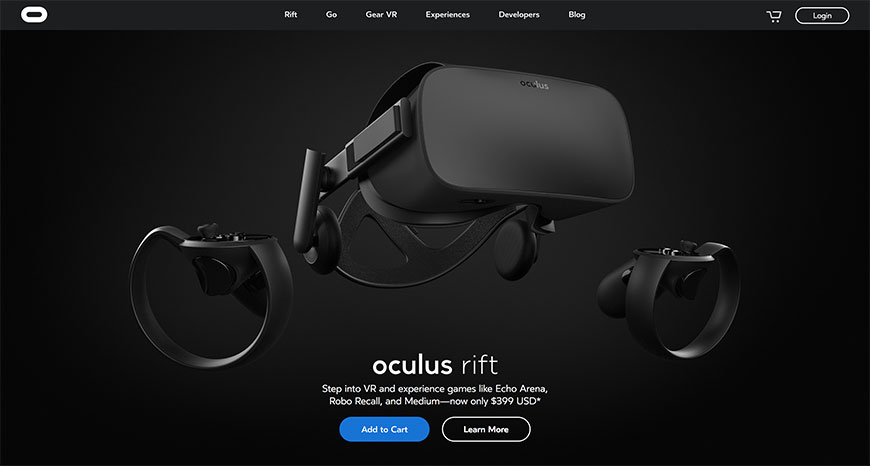
The Oculus blog follows all things VR and the exciting developments that come with it. Oculus is a technology firm based in California that is one of the forerunners of the VR market. Their specialties include VR software and hardware as well as accompanying products. One of their spearhead products is the Oculus Rift. The Rift is a VR headset and accessory set that lets users immerse themselves in the VR content. The Oculus blog features stories not only about their product offerings but also broader topics. There are also pieces about events like the Game Developers Conference, SXSW’s Virtual Cinema exhibition and new VR title releases. The releases recap happens on a weekly basis, allowing its audiences to stay the blog features both text and video formatted content so that you can choose how you want the information. For example, the article on VR journalism has a transcribed interview but also a video summary. The blog also has relevant information regarding joining the Oculus team in various departments for hire. They are also very responsive to the comments left on their blog posts. This helps create a stronger sense of community and establishes that there are real people behind the VR brand.
Milk - Samsung VR
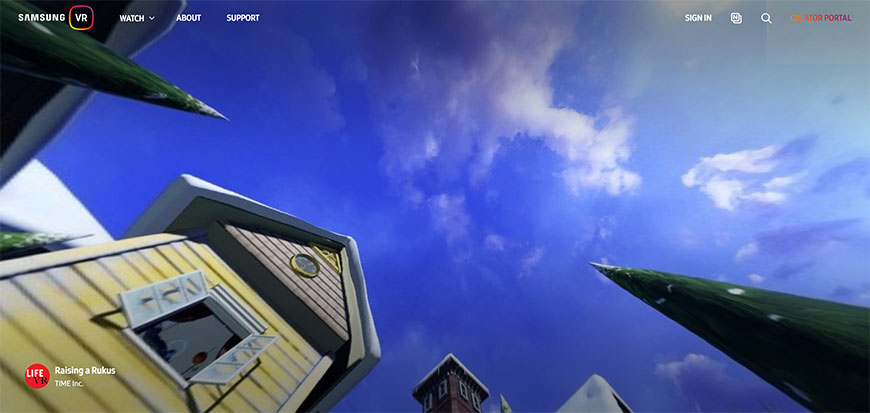
Milk VR was the predecessor form of a VR experience used by Samsung to create an immersive user experience. The app was available on Google Play and unlike its competitors, did not require that users own a VR headset in order to experience the content. Rather than use a headset, users need only tilt or pan their phones around to get the feeling of being surrounded. This mobile app allowed for access to previously headset-restricted content. However, there are limitations that must be addressed in trying to understand and use Milk VR. Because there is no headset and can be used with only a phone, all of the expansive libraries of VR content is not available. One of the obstacles to using a phone for VR content is the limitations surrounding the interactive content. Milk VR is also only accessible to two very specific brands of Samsung phones, the Galaxy S7 and S7 Edge. Despite this, there is still a large library featuring content from 20th Century Fox, Mountain Dew, and even the NBA. Using this app is a way to learn about the challenges of finding the right platform for VR development and also addresses how to reach a bigger audience. Content is provided for download for later, offline viewing. Milk VR has been officially rebranded and is now housed under the name Samsung Gear VR.
Google Cardboard
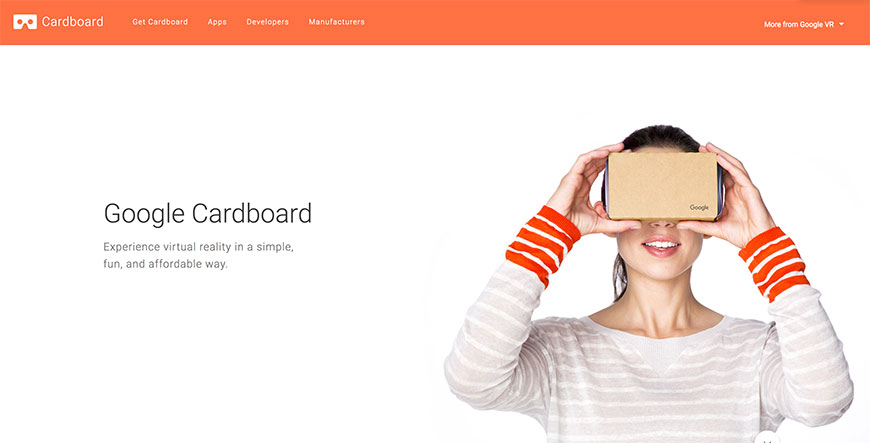
It seems surprisingly simple, but Google Cardboard is a way to bring immersive virtual experiences to just about anyone and at a fraction of the cost of other VR headset equipment. The cardboard viewer can be bought directly from Google, or more industrious users can fold their own—depending on what size of technology or phone is being used. Along with the cardboard, there are 40mm focal lenses that help transform a phone into a VR headset. Once the equipment is sorted, a user can explore the plentiful VR experience options. This requires another app, Cardboard, that is available via Google Play. It works as the platform for launching and running the VR experience. There are some that argue that Cardboard is not truly a VR experience and there are blogs that support this idea. Still, there are others that say it is a useful tool for introducing and easing users into the world of immersive technology. Regardless of stance, using Cardboard allows a VR experience through the use of 360 videos and amplified graphics. The functionality of Cardboard is good even if the experiences are not as impressive as other headsets. The blog also offers insights into Google VR development, including new headsets and accessories.
Oculus Story Studio
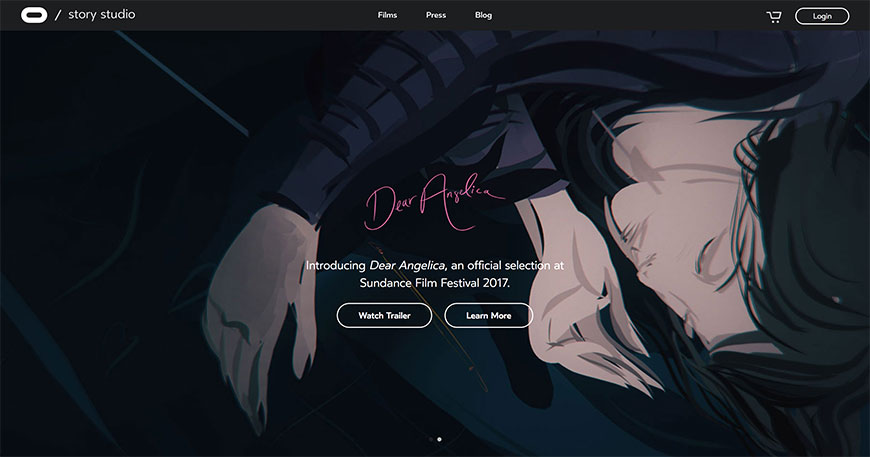
Unlike the general Oculus blog, the Oculus Story Studio is a blog that is centered more on the artistic and creative contributions to the VR world. It is far less about the technical aspects of graphics frame rates and more about the stories being written or illustrated. Most of the entries are about the specific troubles the former Pixar employees encounter when trying to balance a compelling narrative with equally exciting immersive graphics. An awesome part of this blog is that the designers and content creators actually share information about the tools they use to write their stories and craft their worlds. The blog explores the nature of being a creative content provider and shows examples of VR animation being used in the real world beyond just personal use. There are event highlights like the animation ‘Dear Angelica’ being screened at the Sundance Film Festival to overwhelming positive review. This blog, unlike others that speak more on developing VR accessories and new platforms, is driven by the goal of telling great stories that do not rely on VR graphics alone. Outside of the scope of creative discussion, there are also pieces about the overall struggles with developing VR that works with the technology instead of against it. This blog excels in being able to humanize the VR world.
PlayStation VR
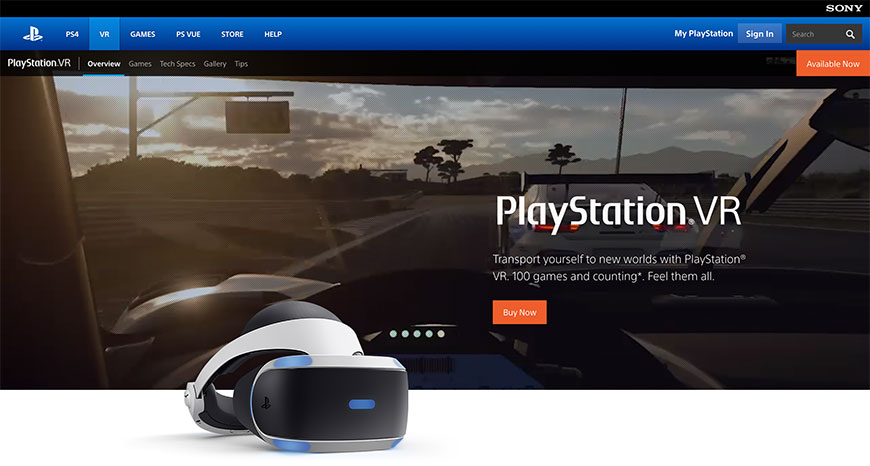
Gaming powerhouse PlayStation is no stranger to creating beautiful game and video content. Still, the foray deeper into non-console driven VR experiences has led to the development of great content and an expanded audience. The PlayStation VR blog has multiple articles, with the majority focusing on titles being released for the PlayStation headsets. There are in-depth guides to some of the new releases, including how to make the most of your VR experience by explaining the settings, controls and other environmental aspects. As one might expect, there are occasional posts offering bundle deals that combine the needed VR equipment (camera and headset) with an actual game that can be enhanced with VR. There is a mix of text and graphics found throughout the blog that helps carry the content being shared. There are also videos that are short trailers for the content available in their VR library. Being that the VR is part of the PlayStation family, there is an active community that uses the comment section to respond to the blog posts with questions or to express excitement for the new titles. New titles seem to be a frequent topic that is shared, and this allows users to follow their preferred choices from development all the way to release day.
Other Ways to Learn
Social Media Networking
It might go without saying, but these days, one of the best ways to learn about something is to directly communicate with the people in the field. Social media has made it possible to speak to content creators using Facebook, Twitter or even email unlike before when you might have to wait until a book signing or speaking engagement. The growing market of social media network means that influencers and developers might be open to answering your questions. Besides reaching out to content creators via tweets, you can also use online groups to drive your learning about VR. Multiple VR groups exist for all levels and in multiple cities so finding one near you should be a quick search away. It’s vital that you do more than simply be a member of these groups in order to get benefits, however. By being an active and positively engaging member, you can get more access to the knowledge that you’re seeking. Facebook groups, in particular, have been known to lead to meetups where people can exchange ideas, foster friendships and even develop VR projects. Another great benefit of using Facebook groups is that it’s free. All you need is a Facebook account to gain access to millions of other users interested in VR.
Comment Sections
Outside of Facebook groups and Twitter, there are other avenues to help you gain more knowledge about the VR community, developing trends and how to develop your own content. Many articles are written to be informative and educational. Once again, it helps to be active. Subscribing to a website and getting newsletters is definitely a good feature but making your presence known is better. If you have questions about the articles or content, leave your inquiries in the comment section. You can help spark discussions that give you exposure to new avenues and creators. The more popular the information outlet is, the more fleshed out the comment section will be. With VR making developments on an almost weekly basis, the comment section is an ideal way to keep abreast of the current events. Comment sections can also be a way to connect with other VR knowledge seekers, designers, and developers. There is a chance that you might be part of a small group brave enough to comment and that’s okay, too. The goal is to increase your VR knowledge and expand your resources. Within the comment section, if the website allows, links can be shared that can help guide you down the appropriate path for your virtual reality education whether that’s on the technical side or more grounded in the graphic design elements.
Create Visual Sitemaps
Create, edit, customize, and share visual sitemaps integrated with Google Analytics for easy discovery, planning, and collaboration.
Popular Tags
Search Engine Optimization SEO Accessibility Testing Create Sitemaps Sitemaps UX User Experience Sitemap Generator Content Audit Visual Sitemap GeneratorGet Started with DYNO Mapper
Join thousands of professionals using the most advanced visual sitemap tool to simplify discovery, IA, and content planning.
👉 Start Your Free Trial — No credit card required.




